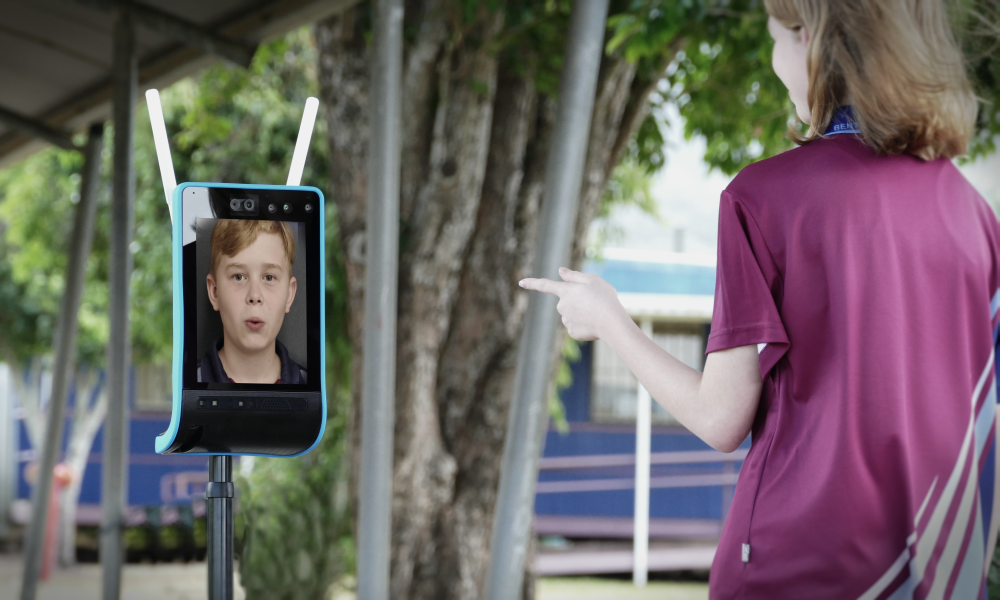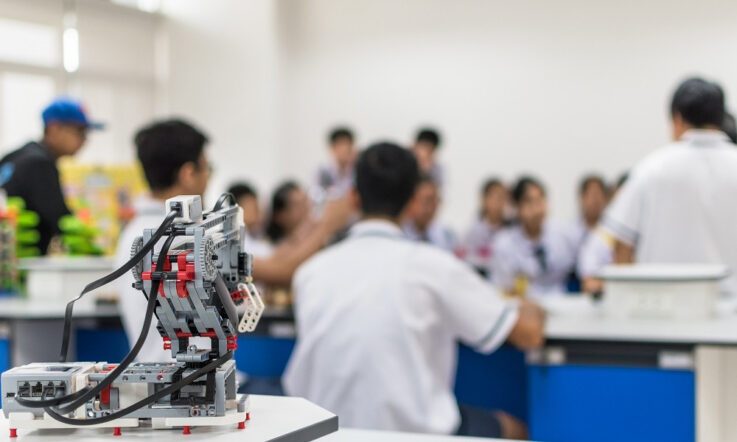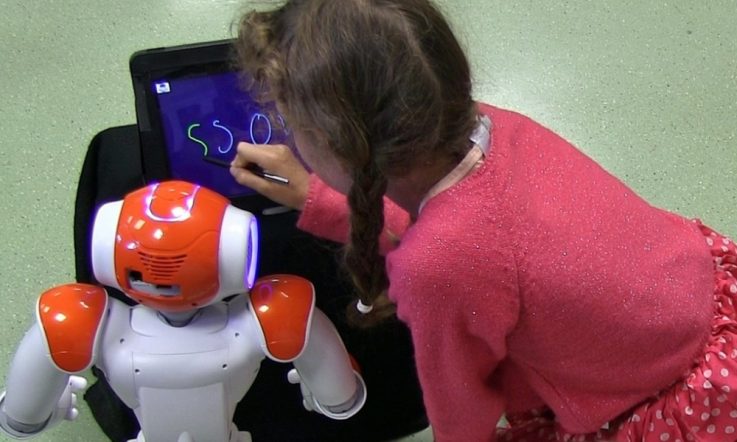I am NOT a robot but a robot took me to school today! Imaginary words from an imaginary student – however, for those unable to attend normal classes on campus this kind of technology represents a very real solution to a very difficult situation.
Access to a telepresence robot has the potential to transform the lives of students. Although Bentley Park College in Queensland is very new to the world of telepresence and is in the early stages of exploring its uses and benefits, we have been so impressed with how easy it has been to use and how well it has been received by students and teachers. As we’ve been gathering feedback data we can, even now, see its wonderful potential for our students.
The gap
Before we look at the technology, let’s consider the impacts when student attendance at school is just not feasible. Some students are housebound for many reasons, for example, illness, surgery, disability or mental health issues. Others may be physically present at school but their circumstances prohibit their attendance in the classroom.
These difficulties might last a week or two or, in serious situations, for more extensive periods of time. Over an extended absence, an inevitable impact is a loss of continuity in the student’s learning; a critical gap spanning the time before they left until when they returned.
Teachers work hard to help students ‘catch up’ but the reality is that sometimes the gap is just too much to bridge, creating anxiety for student and teacher. Denied the ability to access the same resources, teacher support and learning strategies as their peers, it’s hardly surprising that students fall behind, struggling to meet achievement expectations.
The freedom at home to eat when they want, to go to the toilet without needing permission, to sit at a desk without getting up creates a gap in their capacity to cope with the structured classroom environment, requiring some adjustment when they return to school. Maybe the greatest gap, however, is the loss of presence – a deep sense of loss experienced by the absent student and peers who worry about their welfare.
So many teachers make a great effort to bridge these gaps as best they can; to provide students with schoolwork, knowing that it can never replicate the social, emotional and academic benefits schools provide. Parents too face significant pressures to motivate their child to engage with the tasks provided by the teacher and to provide adequate learning support.
As the following so succinctly and accurately summarises: ‘Academic achievement may be hindered, relationships with peers and teachers disrupted and motivation diminished. Isolation from the school community can put students at risk of disengaging from school and learning, with long-term consequences which persist into adulthood,’ (Gilmour & Meyers, 2018).
Welcome to the telepresence robot
At first sight, the robot seems such a simple technology. It looks as if a tablet has been stuck on the end of a long pole, with large wheels below. However, it would be a mistake to underestimate its sophistication as a tool that can make a difference.
Connecting by internet to the user’s device, it can be ‘driven’ using simple controls. The user’s face and voice are projected through the screen. Currently, telepresence robot technology is being used in a range of contexts – aged care facilities, home support, training, remote health services, working from home, remote attendance at conferences, tourism, business and tours of museums. However, its ability to enable interaction with peers and teachers is transformative for students cut off from class.
We’ve found that students take to this easy-to-use technology like the proverbial ducks and water! In this digital world, students already have the skills to navigate using a device, developed from their earliest experience of using a gaming console or smart phone.
This description of a student’s first experience from one of our team says it all:
He was a natural with the controls. He positioned himself around the centre of the room, but when he couldn’t read what was on the board clearly, he easily guided the robot around desks, chairs and other students to a better position, closer to and centred in relation to the board. He parked the robot and adjusted the height with no issues.
Addressing the ‘absence gap’
With the use of the telepresence robot, the student is back in charge of their learning. Negotiating the robot around the classroom, they can work in groups, follow the teacher’s instructions, put their hand up to ask or answer questions, study the board or data display, and laugh with friends.
Again, as one teacher observes, students are ‘brought up on this stuff’, relating to their friends as ‘real people’ not simply as screen images. Other students quickly relate to their robot-present classmate, welcoming them back, excited by their presence in class and naturally engaging with them.
The robot bridges the many gaps that have negative effects on learning, routines, engagement and social relationships. Our experience so far with this telepresence technology suggests that the student is sustained, albeit temporarily, until the time when they are able to physically return to class.
As Laurent Gallon and colleagues observe: ‘The main added value of telepresence in this context is the preservation of the social link between the students, the school, the teacher and especially the classmates. This preservation is an important guarantee of school continuity and the reduction of the risk of dropping out,’ (Gallon et al., 2019).
In brief, the telepresence outcome for the student is to be really present when not really there!
Summing up
Every student has the right to succeed. Every student has the right to ‘access and fully participate in learning alongside their similar-aged peers, supported by reasonable adjustments and teaching strategies tailored to meet their individual needs’ (Education Queensland, 2021).
Some circumstances are beyond our control. We can’t always take away the difficult challenges that students face. However, we can strive to the best of our ability to utilise all the tools at our disposal.
To quote one of our telepresence students ‘I am really in school; helping me to not miss out!’ However, the last word goes to another, who bursting with enthusiasm, exclaimed: ‘This is the future!’
References
Education Queensland. (2021). Inclusive education policy Version: 1.3. Version effective, August 10, 2021. https://ppr.qed.qld.gov.au/pp/inclusive-education-policy
Gallon, L., Abénia, A., Dubergey, F., & Negui, M. (2019). Using a Telepresence robot in an educational context. In Proceedings of the International Conference on Frontiers in Education: Computer Science and Computer Engineering (FECS) (pp. 16-22). The Steering Committee of The World Congress in Computer Science, Computer Engineering and Applied Computing (WorldComp). https://www.proquest.com/conference-papers-proceedings/using-telepresence-robot-educational-context/docview/2277980743/se-2
Gilmour, M. & Meyers, G. (2018). Missing School – Telepresence Robots: Building Better Practice for Connecting Students with Serious Illness or Injury to their Classrooms. Missing School; NSW Education. https://education.nsw.gov.au/content/dam/main-education/teaching-and-learning/learning-from-home/teachers/documents/using-technology/TelepresenceBooklet.pdf
Thinking about your own context, how are you supporting students who, for whatever reason, haven’t been able to attend school? What are the challenges for these students? Could technology provide additional opportunities to mitigate some of these difficulties?



